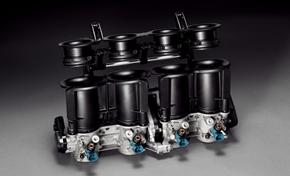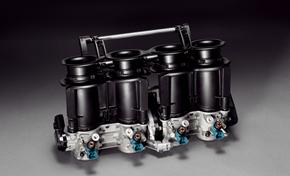The 'floating' intake runners are moved by a mechanism, coupling and decoupling them from the main intake runners to increase the overall length for better low RPM performance. This process was recently discussed here:
mech.SE on inlet runner lengthmech.SE on inlet runner length
I don't see that having the extension pieces in the decoupled position would have any effect of the resonant properties of the air box, particularly as they have open ends.
Here's a couple of pictures of another, very similar, Yamaha system shown in both states:


This is an article from Yamaha that explains the system and the purpose of it.
